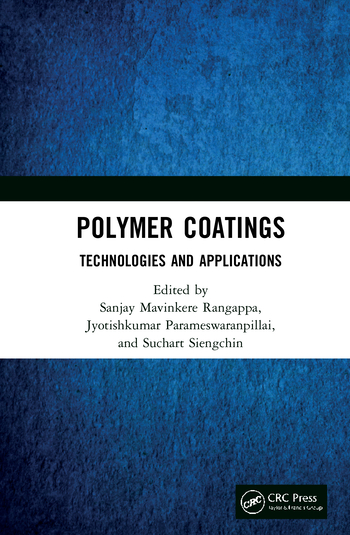LANXESS Hosts Sustainability Symposium

Keynote speech by Joerg Hellwig, Head of LANXESS Inorganic Pigments.


Model of the new plant in Ningbo, China.

Panel discussion featuring (from left to right) Dr. Brij Mohal, Chromaflow Technoloiges; Kenny Xu, Bikin Printing Material Co. Ltd.; Paul Sasada, AkzoNobel Sourcing; Petra Lenz, BYK-Chemie GmbH; and Dr. Hao Li, HCA Consulting China Ltd. All images courtesy of LANXESS.




The smoggy Shanghai skyline was the perfect backdrop for the first LANXESS Pigments Symposium under the topic “Sustainable Technology for a Clean Environment,” which was held November 22, 2013, in conjunction with the ChinaCoat show. China has become the world’s largest consumer and biggest production base for the coatings industry, as well as the single largest market for iron oxide pigments. It also releases the largest quantity of CO2 emissions in the world. The urbanization megatrend in China will continue to propel the coatings market to grow at a double-digit rate, according to industry experts.
More than 140 participants, including customers and distributors from the industry as well as representatives from academia, government, associations and media gathered together with LANXESS executives and experts, sharing trends and outlooks for the inorganic pigments industry with a special focus on sustainability both globally and in China. I was honored to have been asked to speak at the symposium, on the topic of the importance of sustainability in our industry. Additional speakers included: Joerg Hellwig, Head of the LANXESS Inorganic Pigments business unit; Chien Ming Cheng, CEO of LANXESS Greater China; Kong Zhiyuan, Head of Architectural Coatings Laboratory of CNOOC Changzhou Paint and Coatings Industry Research Institute; Paul Sasada, Spend Area Director Colored Pigment and Colorants, Akzo Nobel Sourcing; Xu Shufan, Vice Inspector of Science and Technology Division of the Ministry of Environmental Protection; Dr. Karsten Eller, Chief Operating Officer of Beckers Group; Dr. Wolfgang Oehlert, Head of Technical Operations at LANXESS Inorganic Pigments and Natalie Chen, Head of LANXESS Specialty Chemicals Co. Ltd.; Dr. Waldemar Czaplik, Head of R&D Penniman Technology at LANXESS Inorganic Pigments; Dr. Volker Schneider, Head of Global Competence Center Paints at LANXESS Inorganic Pigments; and Bryn Irvine, President of Palmer Holland Inc. The program also included panel discussions by LANXESS customers and distributors.
China Takes Action
China is a big producer of pigments and coatings, but is not a strong producer in terms of environmental friendliness. The country is far behind in waterborne technology, and in most industries, VOCs are directly emitted into the atmosphere. In recent years, however, China has attached great importance to environmental policies and has developed measures for a low-carbon environment. Xu Shufan, Vice Inspector of Science and Technology Division of the Ministry of Environmental Protection in China, spoke about the country’s plans to reduce CO2 emissions per unit of GDP by 17% in the next five years. China has also adopted a series of energy conservation measures to change the present energy structure, which is based on burning coal. The country is also interested in renewable materials. In September of this year, China hosted the Green Industrial Coating Asia conference, where bio-based coatings were a highlight. During the conference it was noted that in early 2013, the China State Council put forward a blueprint for “Planning for Biotech Development,” showing that developing a bio-based industry is now a national strategy for China.
According to Joerg Hellwig, Head of the LANXESS Inorganic Pigments business unit, “China will remain a strong driver for global pigment demand. In particular, environmentally friendly products are expected to outperform the market, due to growing awareness of the eco-compatibility and increasing requirements for high-quality products. This applies not only to the products but even more to the method of manufacturing them.”
More-Sustainable Manufacturing
The chemical industry plays a major role in the quest for sustainability, as technology advancement and manufacturing process optimization can bring huge benefits, not only economically, but also ecologically. During his presentation, Ming C. Chien, CEO of LANXESS Greater China, noted that the company has set a goal to reduce specific CO2 emissions and energy consumption by 10% in each business segment, as well as reduce VOC emissions by 30% by 2015. At the symposium, company technical experts introduced a major step forward in Penniman Red production technology with a new optimized Penniman process that ensures high environmental compatibility by optimizing water treatment and waste gas cleaning.
In the traditional Penniman process, a range of very attractive bright red pigments are available, but it is challenging due to environmental issues. The process requires large amounts of energy, particularly during the Penniman growth reaction. The waste gases from the process contain significant amounts of nitric oxides, which are toxic, climate-damaging substances. In addition, the wastewater of the process contains harmful ammonium nitrate, which when discharged into rivers and lakes, leads to eutrophication, causing fish mortality and a reduced drinking water supply.
LANXESS has developed a new, innovative process that leads to a significant reduction of the environmental impact. The new process is extremely energy efficient compared to the known Penniman Red process through innovative technical solutions. In addition, the new optimized process conditions lead to significantly lower emissions of ammonium nitrate in the wastewater and nitric oxides in the waste gases. These very positive results have been achieved by optimizing the process parameters of the different process steps and the implementation of innovative wastewater and waste gas treatment technology. In total, the LANXESS technology is a new benchmark for the sustainable production of Penniman Red pigments.
In addition, due to a well-controlled pigment growing process, the company is able to produce many different color shades and offer brighter red pigments, thus enabling LANXESS to expand its existing Bayferrox series.
With an investment of 500 million RMB, LANXESS is building a new facility for these premium iron oxide red pigments in Ningbo, China, using the company’s new Penniman process. The facility (shown above) is initially designed for a capacity of 25,000 metric tons and will create 150 new jobs. Construction began in mid-2013. “With this plant we will be the first inorganic pigments manufacturer that is able to produce these yellow shade red pigments in an environmentally friendly and consistent way,” said Wolfgang Oehlert, Head of Technical Operations at LANXESS Inorganic Pigments.
Sustainability=Business
As a supplier, LANXESS has taken a leading role in our industry’s journey to sustainability. This is something that is appreciated by coatings manufacturers, especially companies like AkzoNobel, which spends two thirds of the money it allots for innovation on sustainable development. Paul Sasada, Spend Area Director Colored Pigment and Colorants at AkzoNobel, noted that Akzo’s philosophy is that sustainability is business, and business is sustainability. Though our finite amount of raw materials may someday disappear, we all still want to have a business and to produce something, and this will only be possible through sustainable development. Sasada noted that the environmental impact of products does take part in the decision to purchase products, as does the attitude of suppliers toward sustainability. It is important to AkzoNobel that a company seeks sustainable development from a true desire for proactive improvement rather than from pressure to comply legally.
All those who attended this symposium walked away with a new appreciation of the importance of sustainability not only in our industry, but throughout all industries. As I noted in my presentation, it is one of the greatest challenges of our century.
Looking for a reprint of this article?
From high-res PDFs to custom plaques, order your copy today!











